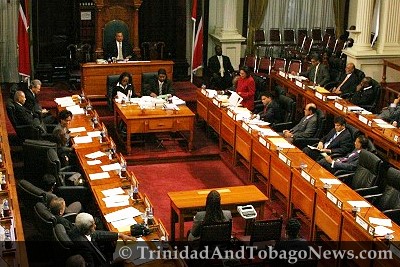By Andre Bagoo
October 13, 2013 – newsday.co.tt
 THE MOST crucial exercise in any democracy is an election. Therefore, the rules governing the electoral process take on a particular significance. Yet the elections rules, as currently formulated, appear to have crucial gaps which make them arguably inconsistent with the provisions of the Constitution, the Supreme Law.
THE MOST crucial exercise in any democracy is an election. Therefore, the rules governing the electoral process take on a particular significance. Yet the elections rules, as currently formulated, appear to have crucial gaps which make them arguably inconsistent with the provisions of the Constitution, the Supreme Law.
The PNM this month questioned the nomination of three COP candidates to contest the Local Government elections. The PNM alleged that the trio were not members of the COP at the time of their nomination and were, instead, “well-known UNC” members.
In response, COP chairman Carolyn Seepersad-Bachan said the three were, in fact, COP members, though she did not state on what date they so became or by what process of registration. Seepersad-Bachan further expressed bemusement at how the issue had cropped up, given the ruling People’s Partnership practice of having one party member contest a seat under another party’s banner. This, she said, is what happened in the 2010 general election which saw the National Joint Action Committee (NJAC) political leader Makandal Daaga contest the election (unsuccessfully) under the UNC symbol. Observers pointed out that, also in 2010, the Movement for Social Justice (MSJ) member Errol Mc Leod contested the Pointe-a-Pierre seat under the UNC symbol.
But is it right that one party official be allowed to contest an election under one banner even though they openly admit to being a member of another party? Whether or not a coalition arrangement is involved, surely an argument can be made that someone like Mc Leod, by contesting under a UNC symbol, represented to the electorate on the ballot paper that he was UNC when he was not. In fact, McLeod was not only a member of the MSJ, he was the political leader! Is this not a contradiction when we consider the provisions of Section 49 of the Constitution which were applied to former St Joseph MP Herbert Volney?
Under Section 49 of the Constitution if a person quits the party under which he contests the election, then that person loses their seat; the seat is vacated and a bye-election is triggered. No doubt the democratic principle behind this is that if a candidate tells voters he is a member of a political party and they vote for him under that assumption, if he changes his party membership then arguably a kind of hoodwink has occurred. Persons could contest saying they represent one thing, then surreptitiously shift allegiance and a completely different party would be in government. Hence, the framers of Section 49 appeared to believe it important for voters, not the candidate, to decide who should hold the seat in a case of a shift in party allegiance.
What of Mc Leod who made clear to voters that he was contesting under the UNC party in an “arrangement”, yet remained MSJ immediately after winning the seat? Mc Leod stepped down as MSJ political leader in 2012 but pussyfooted around questions relating to his party membership. Though he appears on UNC platforms wearing light yellow shirts and has openly criticised the MSJ, he is yet to state if he is a UNC member or not. The Parliament website currently lists him as a member of the MSJ.
What is the difference between Mc Leod, who for one moment on May 24, 2010, was effectively telling voters he was UNC but then reverted to MSJ, and Volney who was UNC then quit in order to go ILP? Yes, Mc Leod was in a coalition arrangement, but that cannot be an excuse for hoping between symbols since coalition parties can withdraw at any time (in fact the MSJ has so withdrawn). The PP is not one political party registered at the EBC. Instead, individual parties with their own integrous registrations exist and come together to make a coalition. The rules that apply to the individual parties have to hold if the coalition arrangement is to have any validity.
The election rules are silent on all of these issues. There are no tests by which party membership is examined. Therefore, the approach of the EBC has been to allow this practice.
Thus, lack of rigour and clarity in the rules has resulted in a situation where the election rules themselves seem to facilitate a practice which appears to contradict the Constitution. The Constitution treats the question of a candidate shedding party membership seriously, while the election rules do not regulate the question of party membership at all.
This situation has only come about because when the Crossing of the Floor Act – which amended the Constitution by inserting the current Section 49 – was passed under the PNM in 1978, no concomitant amendment to the election rules was made to clarify questions of party membership. The PNM is correct to raise the question of the legality of the practice of one party member contesting under another’s symbol (even though the COP maintains this is not the case here). Yet, the PNM may well find that the root of the problem dates back to the administration of one of its founders, former Prime Minister Dr Eric Williams.
